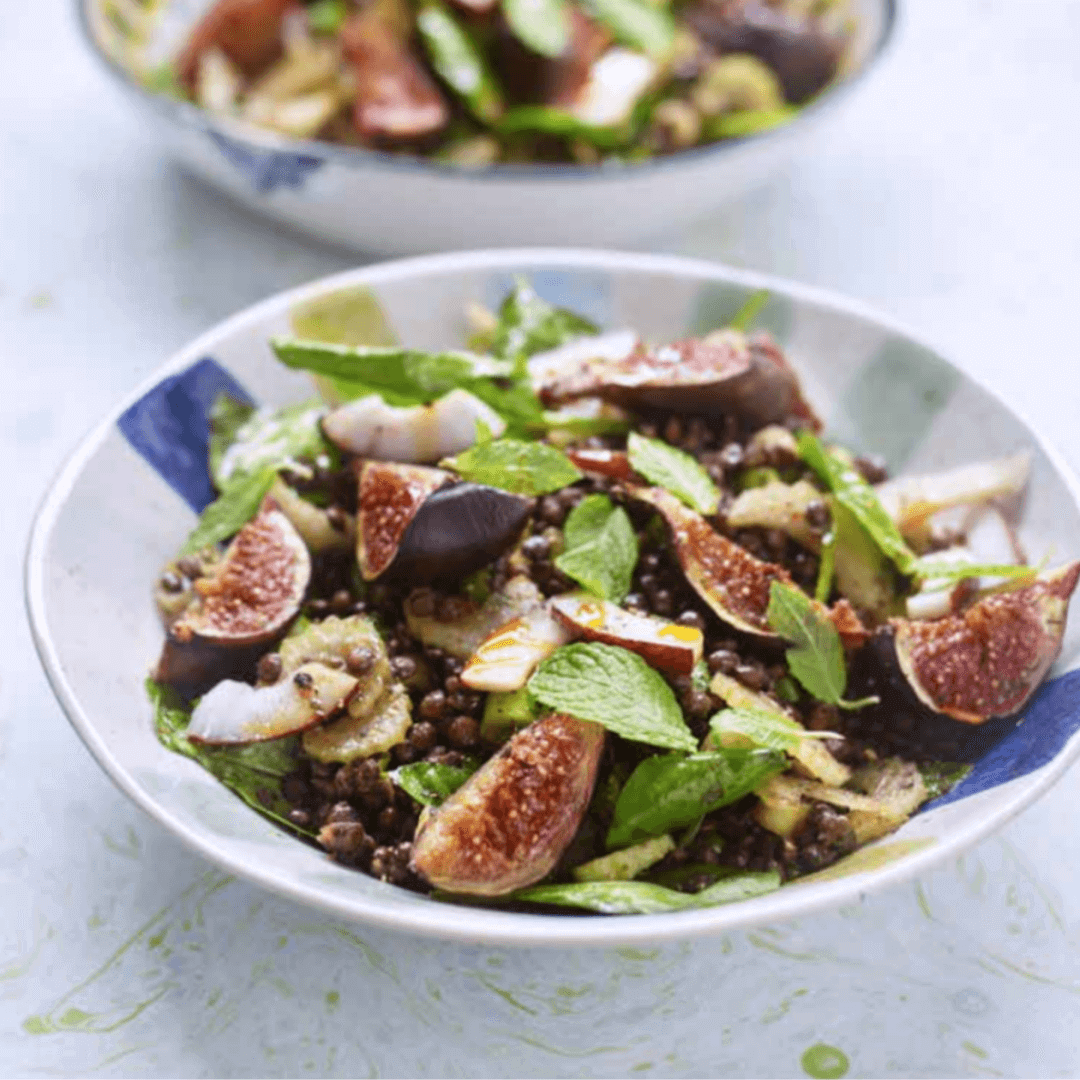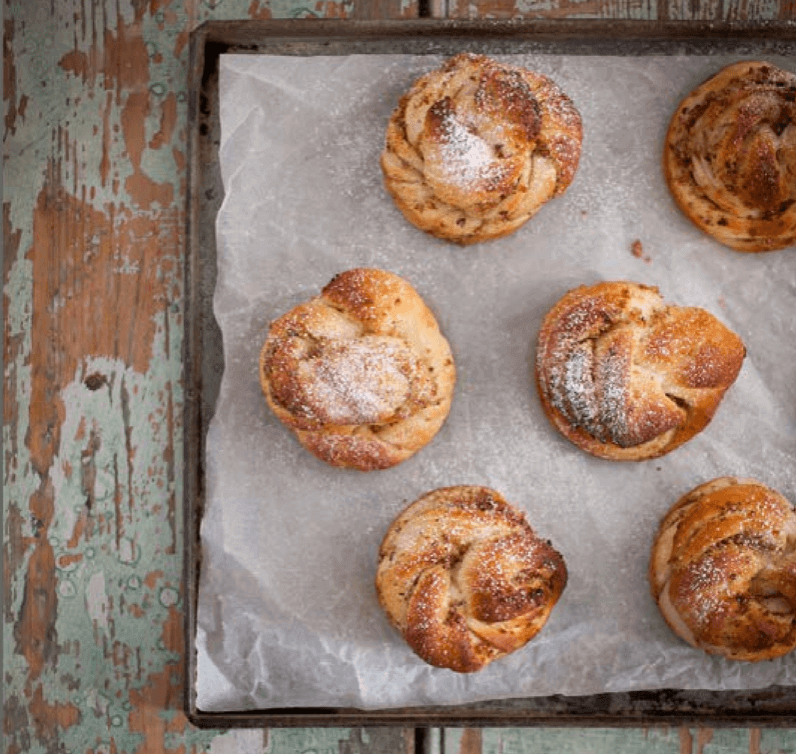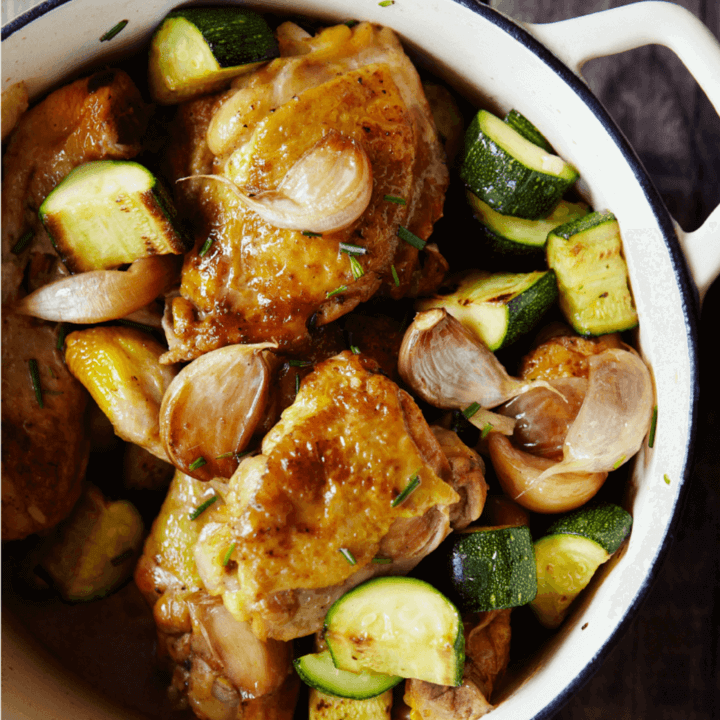
Fig & Lentil Salad from Virtually Vegan
Summer and salad go hand-in-hand and this offering from Heather Whinney’s Virtually Vegan is a fresh, sweet, figgy take on a summertime staple. Complete with a harissa
The Part-Time Vegetarian’s Year by Nicola Graimes is available to buy NOW!
–
How things have moved on since my original The Part-Time Vegetarian was published five or so years ago. The culinary climate has definitely changed for the better, with more of us choosing to eat plant-based meals on a regular basis. And to prove the point, research figures show that, impressively, one in three in the UK have cut down on the amount of meat they eat, with 60 per cent of vegans and 40 per cent of vegetarians having adopted their dietary preference over the last 5 years.
While the health benefits of a plant-based diet – the reduced risk of major chronic diseases, obesity and diabetes – are well documented, it has been the growing concerns over the environmental impact of intensive animal farming that has spurred much of the move towards flexitarianism, vegetarianism and veganism over the past few years. Recent research has revealed the hefty footprint of intensively reared meat, with the conclusion that the single most effective way to reduce our environmental impact is a global shift towards a flexitarian diet that contains only small amounts of ethically reared, good-quality meat and dairy, eaten once or twice a week with a plant-based diet being predominant.
For me, one of the most exciting aspects of the shift towards flexitarianism is how inspiring and creative plant-based cooking has become. Nowadays, no chef worth their salt would forget to include a vegetarian or vegan dish on their restaurant menu. What’s more, many openly relish the exciting culinary possibilities of plant-based cooking.
As a family, we have become more mindful of what and how we eat over the years. Like many families, our eating preferences vary and I’m constantly on the look-out for meals that both meet our differing tastes and that can be adapted if need be. Whether we eat meat just once a week; just at weekends; as part of an extended family get together; for a dinner party; or not at all, I’ve found that flexitarianism is a way of eating that can be moulded to suit our individual needs.
I’m hoping that this sense of versatility, adaptability and variety shines brightly in the recipes in this book. Importantly, vegetables always take centre stage with a focus on what’s in season. Where meat (or seafood) are included they are in cost-, eco- and health-conscious small amounts and treated as a garnish, side, topping or second to the plant-based components of the meals. At the heart of this book is the growing relevance of a mindful connection with what and how we eat.


Summer and salad go hand-in-hand and this offering from Heather Whinney’s Virtually Vegan is a fresh, sweet, figgy take on a summertime staple. Complete with a harissa

Too Good to Waste by Victoria Glass is THE guide to getting the very most out of your food, in the most delicious way possible! So much

Today we’re sharing a much coveted Real Bread: Slow Dough recipe – Cinnamon and Hazelnut Knots! These sweet knots are beloved all over Scandinavia, whip

We’re gearing up for the publication of French Countryside Cooking by Daniel Galmiche, coming your way on May 14th (pre-order your copy right here)! To celebrate, we’re sharing

Watkins Media Limited
Shepperton House unit 11
89 Shepperton Road
London, England
N1 3DF

Watkins Media Limited
Shepperton House unit 11
89 Shepperton Road
London, England
N1 3DF